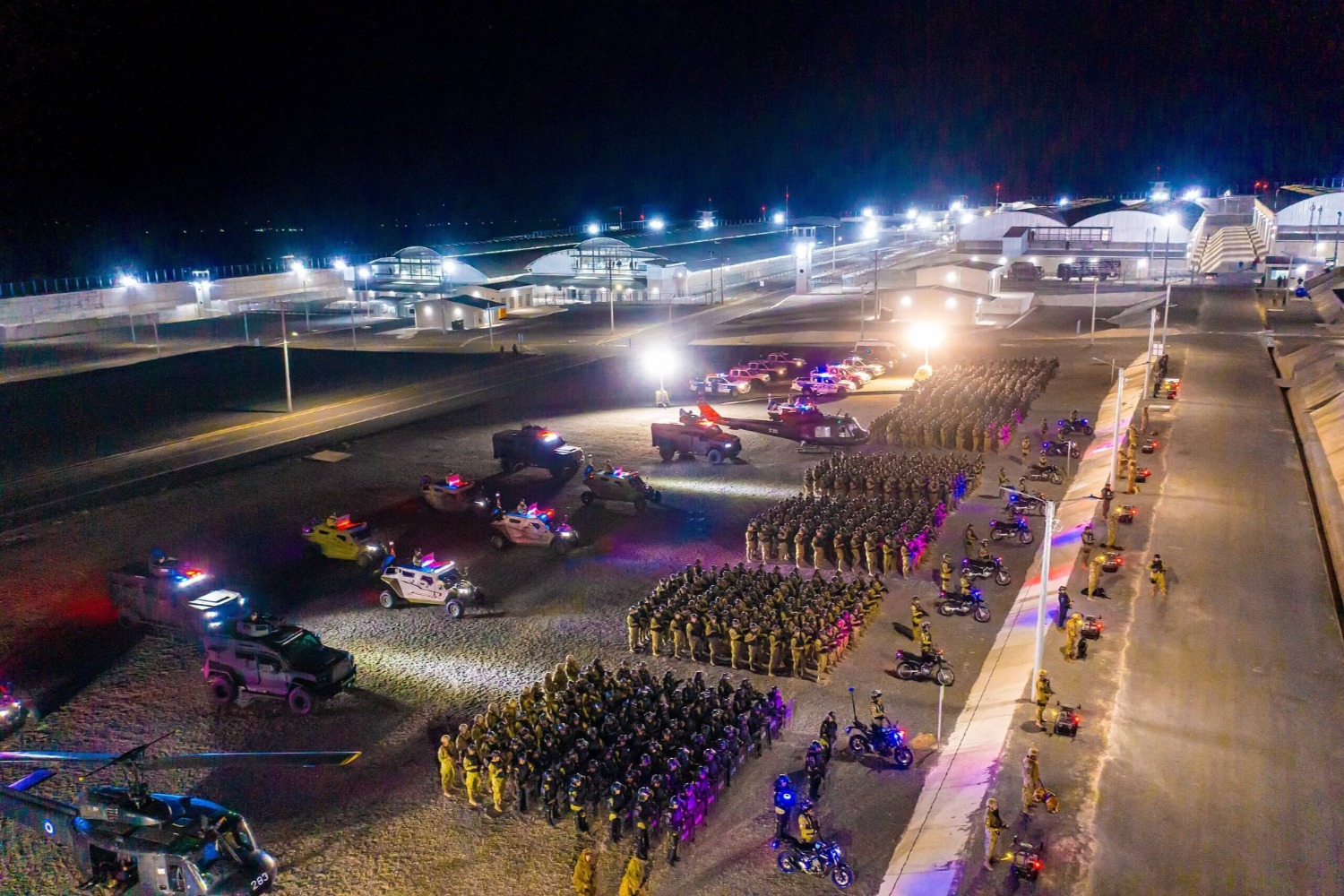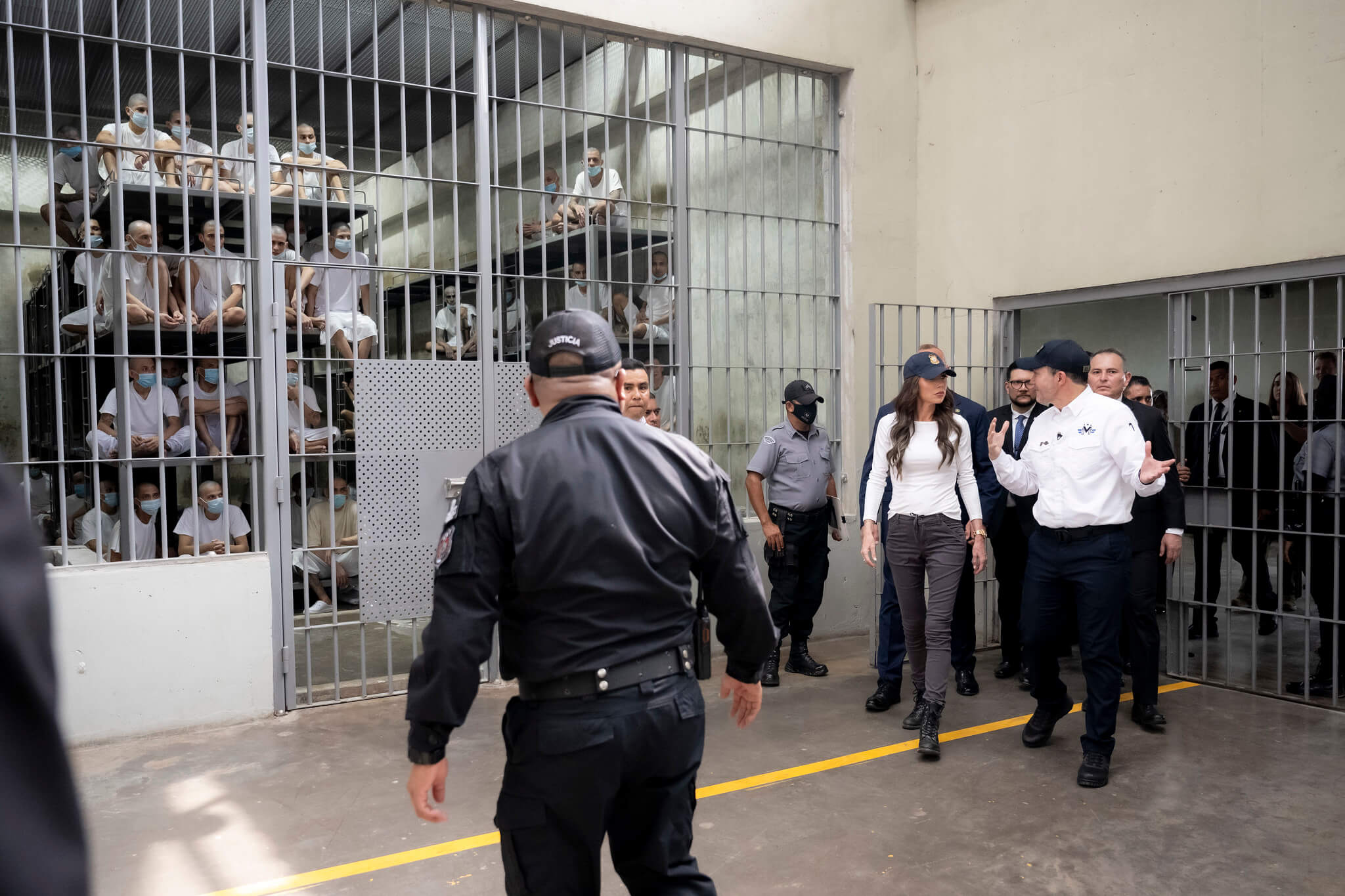Foreign Policy After Trump: The U.S. Has Homework to Do
How, exactly, should internationalists prepare to repair the damage of the Trump era? Many of us are rightly preoccupied with trying to limit or prevent damage in the moment, and longer-term challenges may not get the analytic attention they deserve. As Dan Byman wrote recently in Lawfare, repair is hard while destruction is easy. New leaders will need to come in with clear priorities and approaches in mind.
Published by The Lawfare Institute
in Cooperation With

How, exactly, should internationalists prepare to repair the damage of the Trump era? Many of us are rightly preoccupied with trying to limit or prevent damage in the moment, and longer-term challenges may not get the analytic attention they deserve. As Dan Byman wrote recently in Lawfare, repair is hard while destruction is easy. New leaders will need to come in with clear priorities and approaches in mind. Indeed, ideally leaders will campaign on those approaches, because international policy in our democracy needs a public mandate or at least public trust. A potent combination of economic anger and ethno-nationalism has now been weaponized around national security policy, and it will take a concrete alternate vision to beat that back.
Byman posits that “[n]one of Trump’s changes are irreversible.” But I believe he is wrong—not least because some of the changes that should concern us most didn’t begin under Trump. The water keeps flowing under those bridges Trump is burning, and the rest of the world is not standing still to see what kind of president America can come up with in 2021. It seems unlikely that a return to the policy and rhetoric of the mid-2010s will prove more politically sustainable in 2021 than it did in 2016.
For the first fourteen months or so of the Trump administration, it seemed possible to argue that the world was biding its time until the end of this presidency. But that is no longer true. Prior trends are accelerating, and redlines that other nations had sidled up to in the past are now being burst through. Saudi Arabia’s very public escalation of its Sunni-Shia conflict, which Washington is abetting; France and Germany’s shared moves on defense; and Chinese offers to denominate African countries’ sovereign debt in yuan are just three examples.
As Dan Drezner points out, many of these shifts are not yet visible. But the next two-and-a-half years will see more, and accelerating, changes in how other regional and global powers manage the world around them. Most will be small, and many, on their own, would be reversible—but taken together, they mean that the next U.S. president will face a global landscape for which our policies did not prepare.
The shifts fall into four categories abroad, and one at home: the accelerated weakening of mid-20th century international institutions; the misalignment between our economic needs at home and the focus of our global economic policy; the disconnect between our own international affairs institutions and the realities of great-power competition; the disproportionate role of force in how we organize to meet the world; and the fundamental challenge to the role of values in American foreign policy. Plans to “repair” U.S. standing that do not wrestle with the realities of those shifts will fail.
Moreover, American public opinion is now polarized on international affairs as at no previous time in our history. Yes, majorities still support the basic building blocks of U.S. engagement with the world. But the weakness of both major parties means that strong internal blocs can scuttle almost any significant initiative—and the low salience voters give to international issues that aren’t linked to personal security makes it quite easy for relatively small blocs to do so.
Internationalists must also be honest that domestic dynamics were a significant drag on policy before Trump and made it easier to reverse initiatives, such as the Paris Climate Accord, that the Obama administration lacked the political support to enshrine in law. An approach that is explicitly sold as getting back to the multilateralism of the 2010s is unlikely to attract bigger political consensus than it did in the 2010s when, recall, successive administrations could not create a legally binding structure for fighting climate change, could not ratify the Law of the Sea treaty even with support from the business community, and could not or would not get congressional agreement on when and where to use force or alter trade rules.
To build sustainable political consensus and to deal with the world as we will find it in 2021, some new approaches will be needed. Internationalists’ core values have not changed—and should not. The interests of American workers and communities are more effectively, and less expensively, served by the U.S. acting with partners than alone. Rules and norms serve American interests in the long run even if they sometimes constrain us in the short run.
Here are some questions Americans need to debate and answer before we are confident we know what foreign policy architecture we should be telling our fellow citizens, and an anxious world, that we would pursue if given the chance:
What is to become of the great, but weakening, institutions of the 20th century?
As Bruce Jentleson has written, the institutions that make up the international order were not in peak form even before 2016. It is a commonplace to note the dramatic shifts in global economic and military power since the 1950s and 1990s, but Washington has been slower to acknowledge that the institutions built in the great waves of post-World War II and post-Cold War activity have not kept up.
Consider U.S. partnerships with Europe as just one example. Surely a President Hillary Clinton and her secretary of state would be struggling to forge an effective partnership with an EU consumed by Brexit and hobbled by the emergence of nativist and illiberal governments in a number of key member states. The trouble does not end in the EU. Turkey’s President Recep Tayyip Erdogan, with an autocratic consolidation of power and a turn to nationalism at his international partners’ expense, poses enormous challenges to decades’ work of thinking and practice about how NATO operates—and how the European Union relates to its neighbors. Under those circumstances, what does it mean to “restore” NATO or the G20?
The U.N. and Bretton Woods institutions, too, are a mixed bag of good function, poor function and near non-function. For perhaps a decade, many of them have been—and still are— challenged and changed by so-called “mini-lateralism,” coalitions of the willing, and regional groupings such as China’s Belt and Road initiatives. Bedrock documents of the international system, such as the Nuclear Non-Proliferation Treaty, continue to come under challenge. As Anne-Marie Slaughter points out, much of American thinking and structure when it comes to diplomacy is built for the world of the chessboard, as diplomacy has traditionally been described, in which leaders make one move at a time in a flat, hierarchical system. But, she argues, many innovations in governance occur, instead, in the networked world of the web, where formal hierarchies and distinctions between governmental and non-governmental power are less relevant. U.S. foreign policy has struggled to be effective in informal arenas and has repeatedly been out-organized in recent decades by coalitions of governmental and non-governmental actors on issues such as land mines and climate change. Post-Trump policy will need an updated construct of what multilateralism is, an institution-by-institution assessment of what is holding up and what not, and a plan that finally matches lip service paid to transnational challenges—and all with structures and priorities that deploy the government, business and citizen power necessary to address them.
What kind of global economic arrangements will best revive and sustain American communities?
At least before the round of punitive tariffs and counter-tariffs in recent weeks, there was a strong argument that classic liberalization had run its course. The ills of some American communities could be best addressed not by retreating from the world economy but by strengthening Washington’s ability to combat unfair trade effectively (not unilaterally); by improving the foundations of education, training and safety nets for workers here; and by harmonizing across our key economic partners, in ways that would benefit worker, community and environmental health as well as corporate fiscal health. Elements of such an agenda, as laid out by Jennifer Harris, Brad Setser, and others, would still demand vigorous U.S. economic diplomacy—and they assume healthy international economic institutions, a luxury we may not have by 2021. But they demand different skills and strategies from the Trans-Pacific Partnership liberalization model of the last decade. Diplomats might spend more time building coalitions to enforce existing rules (avoiding the destabilizing and so far ineffective tit-for-tat tariffs Trump favors) and less time negotiating new deals. Officials would work closely with business interests—and with health, environmental and labor interests—to monitor effects on American priorities.
What does a return to great-power competition mean in practice?
It is no longer controversial to assert that we are in an age in which multiple states have enough power to move the global system in significant ways, and to block, hinder or threaten others outside their immediate spheres of influence. But the policy frameworks and rhetoric that defenders of liberal institutions fall back on often simply fail to acknowledge these realities—leaving a gap through which Donald Trump has effectively driven a wrecking ball. As Rebecca Lissner and Mira Rapp-Hooper trenchantly ask: “Can an international order be economically and politically open if its leading states are not liberal?” The task of debating, building national consensus for, and clarifying to Moscow and Beijing what Washington’s aims toward them are—where the United States will cooperate and where it will compete—is a mammoth one on policy grounds alone. Trump’s coded racial rhetoric on trade will further inflame the always-challenging public conversation on China, even as partisan polarization has reshaped public opinion on Russia. Policies shaped primarily by a desire to counter Trump are likely to suffer some of the same failings.
What is the role of force in achieving American ends?
Every recent secretary of defense from James Mattis back to Robert Gates has called for more funding for diplomacy and development assistance—as, of course, has every secretary of state and administrator of USAID. Yet the desire since 9/11 to respond to voters’ security anxieties by increasing defense spending has driven the pendulum the other way, and the Trump administration’s ideological opposition to some of the core functions of civilian international relations compounds that trend. Without articulating an ethical and political doctrine—and one that sounds credible to voters and foreign leaders alike—on when it is appropriate to use force, any new president is doomed to languish in this cycle find herself trying to solve political problems with blunt military tools and risk American lives in the process.
An unpleasant but necessary parallel question is what model the reconstruction of the State Department and USAID should take in a world where many of their cherished practices are outmoded. Decades of underfunding and diminished influence will not be easily reversed. This structural challenge inevitably takes the backseat to policy crises a new administration may face—but it needs to be considered thoughtfully, with congressional leaders, before it’s too late.
Where do values fit in the exercise of American power?
The idea that American values play a key role in U.S. policy has been under attack for years now, as millennials left skeptical after growing up during the Iraq War swelled the ranks of both leftists and realists who insisted the U.S. had either no right or no business impinging on other nations’ sovereignty. Yet those critiques leave aside one of the most important outgrowths of the 20th century’s web of institutions and norms: the emergence of non-governmental powers—from a globally coordinated movement to counter climate change, to Chinese Falun Gong supporters who converge by the thousands on Western capitals, to the activists who egged governments into negotiating a treaty to ban landmines—that demands more and better observation of norms, holding governments and even superpowers to account. The United States—like every other great power in history—frequently sought to evade or flat-out ignore the norms it played a core role in establishing. But the nature of the liberal order meant that non-governmental elements were able, in a limited and imperfect but real way, to call it and others to account.
That job has gotten harder in recent years. The move of illiberal governments like China into the role of defender of the international order makes it harder still. So will years of Washington withdrawing from international commitments and augmenting past hypocrisies with aggressive and even proud embrace of authoritarian regimes. Working with other governments and private entities to redefine a human rights role for the U.S. will require patience, flexibility and humility—not always our forte. Washington may find our new circumstances suit a behind-the-scenes role, which will sit uncomfortably for the generation of human-rights defenders who expect to see Americans at the front of every barricade.
The thread tying all these issues together is the loss of a one-sentence answer to the question: What role does the U.S. play in the world? As someone who entered foreign policy as the Cold War was ending, I am painfully aware of how often we rely on answers that belong to another time. The answer isn’t to defeat China, Russia, communism, or terrorism. Nor is it to stop anyone from taking advantage of us. Personally, my first draft of the bumper sticker is “to sustain our communities, institutions and values in a globalized world.” But jumping to patch up the old institutions, without thinking through whether and how they serve contemporary goals, is not going to get us toward anyone’s goal.





